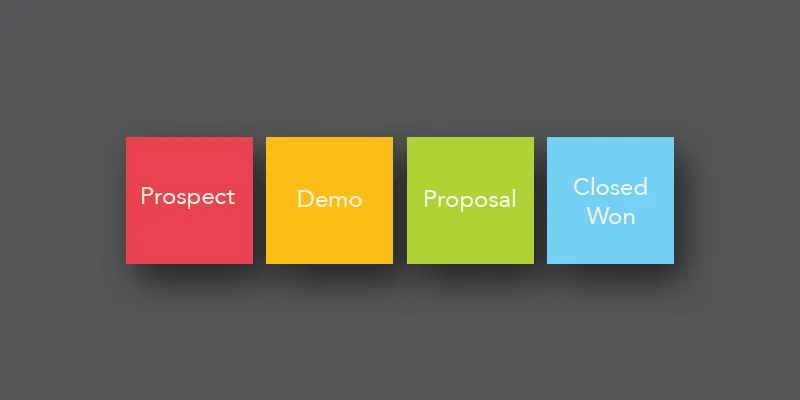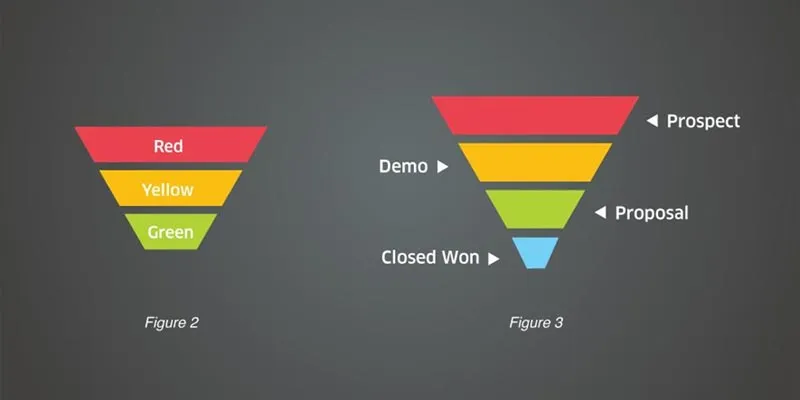Sales funnel strategy – weapon against sales drought
The most mysterious part of any businesses is sales. Your team may build the best SaaS product for product managers or a mobile phone that stands out for its specifications, but if you are not able to sell it, then all your efforts are a waste. Well, I am here not to talk about sales but a significant part of the sales cycle: the funnel. This article will focus on business-to-business B2B sales only.
How often has your team found itself in a situation where a lot of sales close in a week and then no deals happen for the next few weeks or months? Many sales representatives and entrepreneurs might describe this situation as a “sales drought”. It is different from a seasonal drought, caused by external factors, such as the month of March when some businesses have budget constraints due to a fiscal year-end. A common term used here is a “pipeline”.
A sales pipeline can be defined as: “All of your sales opportunities aligned together in progressive steps.” Figure 1 (below) is divided into four stages: Prospect, Demo, Proposal and Closed/Won. Other stages may be added as appropriate for your business.

Sales funnel
A sales funnel is a conceptual framework for a sales pipeline, and it could be your defence against any sales droughts throughout the year. Let us assume, for example, that you or your sales team received 100 marketing qualified leads (MQLs) at the beginning of a sales cycle. If you are an early-stage startup that has not set up a marketing team, consider MQL as the number of prospects that you have.
Assuming that your marketing team is 100-percent efficient, let’s start the sales cycle with 100 prospects (i.e. 100 MQLs = 100 prospects). A prospect is a ‘sales ready’ contact that fits one of the company’s buyer personas or target customers, but may not have yet expressed an interest in purchasing the product or service.
The stages of a sales funnel are often similar to a sales pipeline, only that the shape is different this time. In some organisations, the stages of a sale funnel do not remain the same as a sales pipeline; for example, in a sales funnel, the leads or prospects may be divided into categories or phases that reflect the probability of closure: red, yellow, and green (as shown in Figure 2). It is up to you how to define the red, yellow and green phases of the funnel. I always follow the sales funnel model depicted in Figure 3 because it gives me a very clear picture of the sales pipeline and does not depend on my intuition (or that of any sales representative) for assigning a lead to any one of the phases.

Before you begin your sales funnel strategy, you need to have the following two pieces of information:
- Average time for closure (assume 15 days here)
- Number of closures in a timeline (assume one month)
Let's do some math
It took a few days for your team to start a conversation with those 100 prospects, out of which 70 agreed to see a demo. Scheduling and completing a demo took another ten days, and 40 of them asked for proposal or started to negotiate on the pre-defined prices. At the end of 15 days, your team spoke to almost everyone in that funnel and the numbers are as follows:
Prospects – 30 (They are yet to respond or has not agreed for a demo)
Demos – 30 (They have seen your demo, but you have not discussed the pricing yet)
Proposals – 35 (You have shared your pricing with them)
Closed won – 5 (They agreed to buy and have made payment).
Over the next two weeks, you churned the rest of the funnel and closed five more sales, but you lost 30 of those in the Proposal/Negotiation stage while only a few more moved from the Prospect-to-Demo and the Demo-to-Proposal stages. Your sales funnel is now converting into a tunnel. To keep the show running, you need to pump more leads into the beginning of the funnel and that too at the right time, so that the ratio remains the same. My advice to your sales team would be that if you have a sales cycle of 15 days, add new prospects on every eighth day. It will help your sales funnel to keep flowing.
Most of the sales guys that I meet say that sales is a matter of luck. I do not fully agree with them, but, yes, if you understand probability, you may relate my findings with luck. It's all about numbers: what you pump into the sales funnel is directly related to what pumps out. All you need is to look closely at the numbers and correlate it with your sales strategy.







